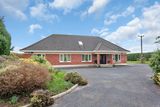Badly-needed city housing can be found right on the shop floor
The most recent survey of commercial properties by Geoview - an arm of An Post - shows that 12.4pc of commercial buildings are vacant nationwide, that's one in eight. In Dublin it's 13.5pc
RECENTLY I ventured into a former lighting shop on Dublin's Camden Street which had closed down just as the recession kicked in. I recalled it as a modest-sized ground-floor shop with a smaller retail area downstairs.
Now it had reopened and the sign outside proclaimed that it had been converted into a market mall.
A mall?
Incredulous, I wandered inside, upstairs and downstairs through a warren of rooms and some vast accommodation I had never realised existed in a building which presented such a small profile to the street.
The amount of space was extraordinary. One big room contained its own 'row' of mini shops for stall holders. Another room had been converted into a silent movie theatre located off a full-working cafe with plenty of seating.
Looking at the cut of the space I guessed that much hadn't been used in years.
Up and down Camden Street - in my grandparents' day one of the city's prime shopping stretches - there are charity shops and empty retail buildings along with a bright new breed of creative independent outlets of the sort that spring up when rents are reaching peppercorn levels.
Much has been written about how the recession has kiboshed the Irish retail sector, and how consumer spending in retail remains the one key aspect of recovery yet to be witnessed.
High streets and their ancillary streets have been under siege thanks to so-called 'out of town' shopping centres and new retail parks. Upwards-only rents have provoked furious debate.
But as the economy recovers, these will become a side show because the real elephant in the room for traditional retail is internet shopping.
There are no conclusive barometers of internet retail versus traditional retail in Ireland, but in the UK, online sales account for one in every five pennies spent across all sectors and online purchasing grew by 17pc the last year alone.
What this means is there are large traditional retail-shop buildings in Ireland - thousands and thousands of them countrywide - which will never again pay for their upkeep through their designated retail usage.
This fact is already evident for some by their decrepit condition.
Already many are too far gone to renovate viably. A few years ago on Camden Street, one of these buildings literally fell into the street.
In many, the upstairs floors, office or residential, long ago ceased because insurance costs and improved regulations, which demand better conditions, prevented it.
In some Georgian-era terrace shop buildings, 6,000 sq ft plus of accommodation sits largely empty - the equivalent of six semi-detached family homes.
The most recent survey of commercial properties by Geoview - an arm of An Post - shows that 12.4pc of commercial buildings are vacant nationwide, that's one in eight. In Dublin it's 13.5pc.
But Camden Street in Dublin, along with many other period shopping streets, these buildings didn't start life as shops. Originally, they were almost all houses, converted bit by bit as those uses became more commercially-viable than residential.
Today we need to face the facts that the reverse is now the case.
With a serious housing shortage in the capital and also developing in other cities, it is time for local authorities to realise that these buildings cannot survive as shops and offices and therefore there is no point in imposing such uses.
These are historic buildings which need to be saved and they can be reconverted back into badly-needed and comfortable housing with the correct planning, conservation and incentives.
Incentives because so many have become decrepit or destabilised beyond a commercially-plausible conversion.
Local authorities in our cities must face the facts that these are, in reality, retail streets no more - or at least not in their entirety - and facilitate what is feasible and necessary. That this also means converting the ground floors back to residential usage as well must also be faced up to.
In the suburban estates of the 1930s, 40s and 50s, where rows of shops were built to house the then obligatory tobacconist, green grocer, butcher and pharmacy, the changes have already been made.
The ground floors have had the frontages altered to reflect their new residential usage. They don't have a front garden and the space at the back is a yard. But, otherwise, they make perfectly plausible and comfortable family homes.
And these are badly needed right now instead of closed-shop planning.
Join the Irish Independent WhatsApp channel
Stay up to date with all the latest news














